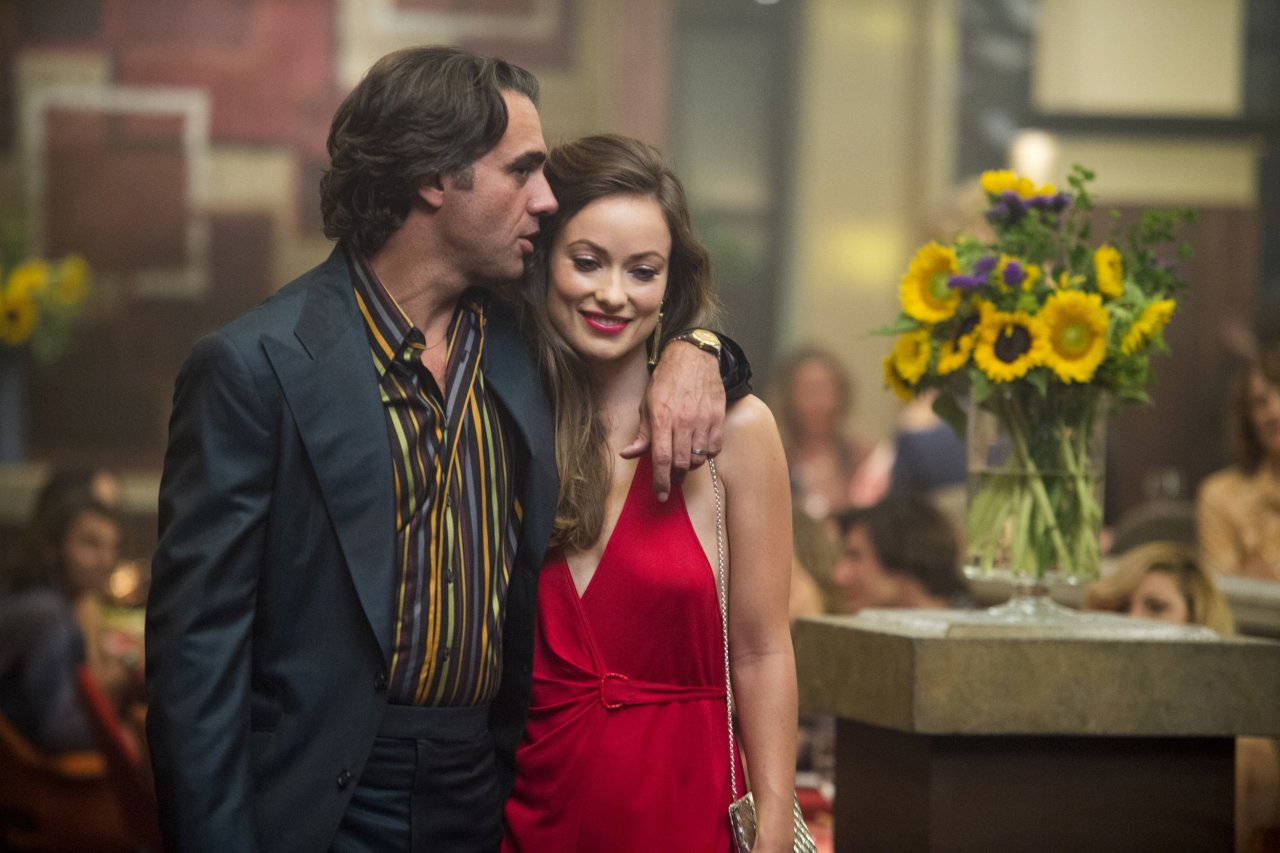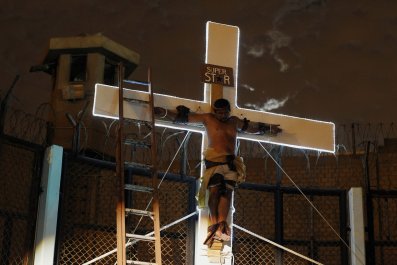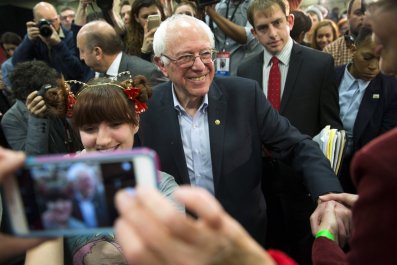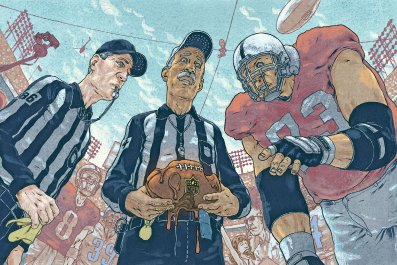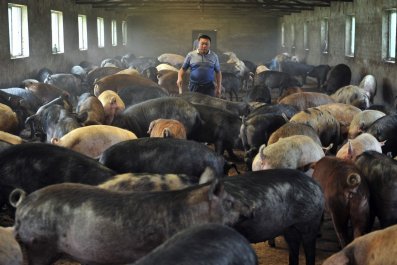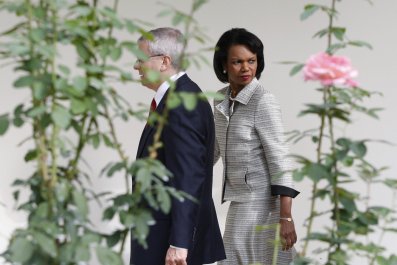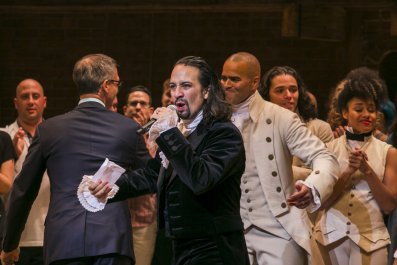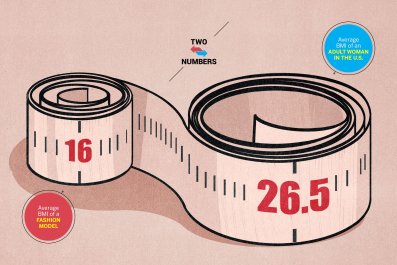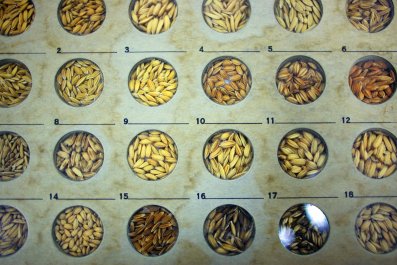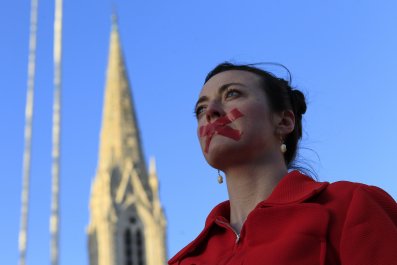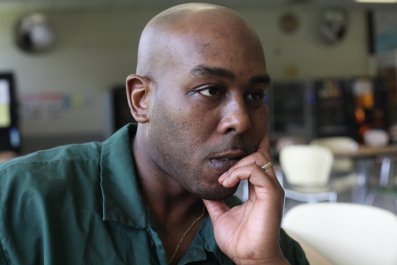The feature-length pilot for Vinyl, HBO's new music industry drama set in 1973, is directed by Martin Scorsese and, not surprisingly, fueled by violence, drugs and rock 'n' roll. The climax is both shocking and surreal: As the coked-up, stressed-out record executive Richie Finestra (Bobby Cannavale) grooves to a New York Dolls concert, the walls of the Mercer Arts Center start cracking open. But what seems like a character's psychotic break becomes a living nightmare when the building collapses on top of him.
The scene is intense, yet the notion of a building just giving way seems outlandish and unrealistic...until a Google search reveals that the Broadway Central Hotel, which housed the Arts Center, did indeed crash down that August.
"It was a perfect metaphor for Richie's state of mind," says Vinyl showrunner Terence Winter (who created HBO's Boardwalk Empire). An earlier draft just had Richie listening to the music, but Winter says "there was something missing" until he rediscovered this bit of New York history that comes to symbolize a death and rebirth for the protagonist.
The scene is also a perfect metaphor for the show, which makes its debut February 14. It fuses a rigorous devotion to accuracy—regarding the city, the music, the clothes—with what Winter calls a "Hey, it's rock and roll!" willingness to break rules to tell a dramatic story. For instance, the New York Dolls played that club but not that night. The artistic license is aided, Winter adds, by Finestra's voice-over acknowledging he's the most unreliable of narrators: "This is my story, clouded by lost brain cells, self-aggrandizement and maybe a little bullshit."
Vinyl is the brainchild of executive producer Mick Jagger and was inspired by his day job as lead singer of the Rolling Stones. He first suggested the project to Scorsese in the late 1990s as "a sprawling film idea that spanned four decades of the world of music in New York City." Twenty years later, it was reborn as a series. "I thought 1973 a perfect moment in time," Jagger says. "New York was very dangerous, gritty, but also very exciting musically. It is a sweet spot for early proto-punk, rock 'n' roll, R&B, and disco was on the brink of being discovered."
Scorsese grew up on the mean streets of New York and in 1973 emerged as the director who captured the city's seediness and decay with a rough vibrancy and memorable soundtrack. (His Mean Streets, released that year, featured songs by the Shirelles, Eric Clapton and the Stones.)
Winter was just a 13-year-old with the finely feathered hairdo of that era's top teen heartthrob, David Cassidy. Living in deep Brooklyn, he would sneak into Manhattan with friends to wander around Times Square and Greenwich Village. "There was a palpable sense that anything could happen at any time," he recalls. "There was a lot of crime and violence, drug dealers and prostitutes. It was intimidating but exhilarating."
Scorsese set the tone in Vinyl's quest for authenticity. Location manager Kip Myers used many historic buildings, shooting at the Brill Building (a renowned home to music industry), the Chelsea Hotel and Electric Lady Studios, which guitar shaman Jimi Hendrix built. Vinyl also recorded its original music there. For a scene in which Finestra stumbles upon the gestation of hip-hop, Scorsese asked for the exact high-rise where DJ Kool Herc once held block parties, but it was right off the Cross Bronx Expressway, which created noise problems. The crew stayed relatively close to that spot, however, because Myers says it lent "an authentic vibe." They also recreated the music club Max's Kansas City near its spot downtown, and old-timers in each neighborhood would share stories, providing a taste of the original scene for cast and crew.
Unfortunately, Myers says, the scene in which the Mercer Arts Center vanishes in a cloud of dust is also a "metaphor for the fast pace of change in the city." The Brill Building has had its exterior renovated with electronic signage. The Chelsea has been remade into a boutique hotel. A furniture store in Greenpoint, Brooklyn, with tile ceilings was a perfect stand-in for an East Village rock club, but now, he laments, "it's going to become condos." (Even the famous Ziegfeld Theatre, where the Vinyl premiere was held, just showed its last movie.) And in a world where even Manhattan's Bowery now has a Whole Foods, the crew had to add trash to dirty up all the downtown street exteriors.
Series costume designer John Dunn says Finestra is on the prowl for new sounds, so that is reflected in his clothes. "Some people in his office are still stuck in the late '60s, which evidences itself in their clothing. There was some very cool clothing then—that era was the birth of interest in vintage clothing, a counterculture reaction to Nixon and the rise of plastics," he adds. "But there were also some definite missteps in the direction of polyester."
The biggest casting challenge was finding people to play the music icons who appear as characters or perform in flashbacks and musical interludes. An actor portraying Led Zeppelin's Robert Plant shows up in the pilot, and later episodes feature Lou Reed, Karen Carpenter, Otis Redding and Alice Cooper. (The show borrowed Cooper's original guillotine from his live shows.) Even Elvis Presley shows up. "You have to find a good physical match, someone who can move and sound like them but also have their presence," says Winter.
More than most series, Vinyl must not only look right but also sound right. "It's not a conventional narrative: Music becomes part of the story, but the whole story really is like a piece of music," Scorsese says. "It's almost like you're listening to Richie's private soundtrack, the one he's hearing in his head, whether he wants to or not."
Randall Poster, Vinyl 's music supervisor (with Meghan Currier), says that after doing his research for Boardwalk Empire he felt like the expert on 1920s music. For 1973, though, "everyone has an opinion; they have their own sacred songs with personal associations." Poster says that to choose "key songs in the evolution of rock 'n' roll" for the series, he consulted people like Lenny Kaye (Patti Smith's guitarist), Seymour Stein (co-founder of Sire Records) and David Johansen (of the New York Dolls), who re-recorded some Dolls songs for the soundtrack.
Poster even made sure all recordings featured period instruments and studio equipment, but wants the series to be "not simply a nostalgia exercise but a place for music discovery." He searched for tunes "that would still catch the ear of contemporary audiences," and became excited about the chance to "dust off undervalued pieces" by artists such as Rosco Gordon, Bobby "Blue" Bland, Lulu, Mickey Finn and the Sonics. But not every song could or should be a classic or an undiscovered gem. Winter, who bought his first album in 1973 (Goat's Head Soup by the Stones), credits Poster with choosing bands like Slade, which churned out the cheesy glam rock Finestra and the punks rebel against.
"Radio in 1973 was all over the map, from John Denver to Led Zeppelin," says Winter. He adds that they are still searching for right balance for incorporating the biggest band in the world in 1973. They have not cast anyone to play Stones guitarist Keith Richards or Mick Jagger (whose son James plays the lead singer of a fictional proto-punk band, the Nasty Bits). But a little tune called "Under My Thumb" does find its way into the second episode. "It's tricky," Winter says. "It feels a little incestuous. But to ignore the Rolling Stones on this show would be crazy."



